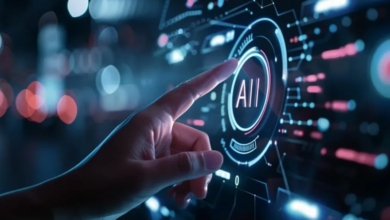Face Recognition Deep Learning Integrating Active and Passive Detection

Face recognition deep learning is an additional layer of biometric system security; technological advancement has also benefited scammers. They have driven new means to bypass the biometric system by performing presentation attacks, and they dodge the scanner. The recent biometric systems contain advanced anti-spoof solutions that detect the user’s liveness. In 2022, the expenditures of cybersecurity surveillance were $71.1 billion; this is the most significant amount recorded until now. The companies have to integrate the solutions to reduce their risk rate and preserve their credentials.
How Does Face Identification System Work?
- The face identification system is a digital technology used to verify the identity of customers online. When companies onboard clients, they perform their verification; this process is done to ensure that the clients are authentic and not involved in any mysterious activities. The organization demands the entire user record; the client’s identity is verified through these papers. When the company holds the customers’ updated information, their risk rate is mitigated. Because they are aware of their users, their source of income is known, and through it, the company can connect with them better.
- Secondly, the company’s daily activities are also regulated through machine learning face recognition. The employees do not have to perform complete authentication; the advanced AI tools are implied for this process. Companies can reduce the salary expenses of their employees, as less labor force is required. The miscellaneous expenditures of the companies are decreased; less paperwork or documentation is required. The task is done online, whether by paper submission or face verification.
Active and Passive Liveness Detection
Facial recognition machine learning improves active and passive liveness; hybrid verification is sometimes involved. In active detection, the customer actively participates in the process; the system asks the user to perform actions like nodes or gestures. The customers also have to respond to the instructions on the screen; some users consider it hectic because they must complete the action. Passive detection means that the system in the backend performs the verification and ensures that the client is authentic; it does not actively check but observes the activity or gestures of the customers without letting them know. Most organizations choose this type of verification because the client’s involvement is optional. Hybrid involves active and passive liveness detection; in some activities, the client has to participate, and the backend system also records the customers’ performance.
Benefits of Facial Recognition
- Smooth Services
The company’s activities are regulated through it, and the employees do not have to perform the verification; the entire task is done by artificial intelligence and machine learning. The organization can onboard its customers, and their authentication can be done through it. The users do not have to visit the office. The whole task is done online, and they also submit their data by taking snaps of the papers. They then upload the image on the given portal, and the comparison of the papers of the customer and the formerly stored templates in the database is done.
- Swift Services
The client has to face the camera, and the entire process can be done in seconds. The traditional ways were time-consuming, as the operator performed the whole task. Humans get tired and sometimes distracted by their ambiance; they misinterpret data and commit mistakes.
- User-Friendly Interface
Clients prefer organizations that give them user-friendly interfaces, and they do not have to read complex and lengthy user manuals. These verifications are so simple that even an uneducated client can be verified; the process is convenient and straightforward.
- Risk Assessment
The organizations can even measure the risk rate of their customers; for this purpose, the clients’ due diligence is measured. The users are segregated as high risk and low risk, and the company builds the relationship with them according to it. The face recognition verification continuously monitors their customers, and the client’s activity is recorded. When the entire data of the users is known, the chances of fraud are mitigated.
Conclusion
Face recognition deep learning enhances the organizations’ surveillance, as the customers’ risk rate is known. The daily activities of the companies are regulated, as the employees do not have to perform the entire task. The advanced tools are implied to perform verification, and the organizations can reduce miscellaneous expenditures through it. The client’s trust is built as these solutions facilitate their users. The risk rate of the companies is reduced, and the interests of the businesses are safeguarded. The organizations implementing it properly have a massive rise in their profit.




